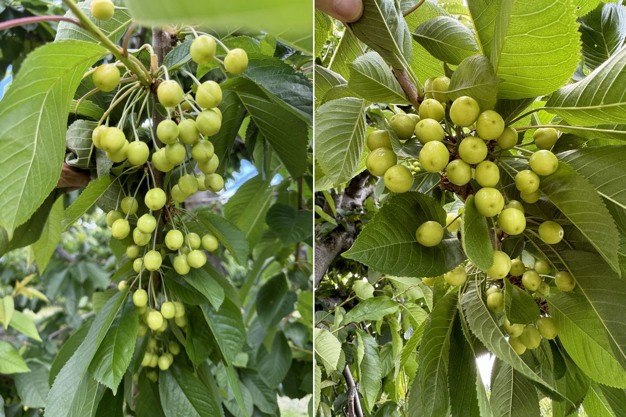The devastating winter freeze event that wiped out a large share of British Columbia's (B.C) 2024 cherry crop, is coming on the back of four difficult years for cherry growers. "In the previous four years, we experienced winter damage, spring frosts, heat domes, and in-season rain events," says Richard Isaacs with Global Fruit. "However, who would have thought that a polar vortex would be part of the weather extremes we are seeing as a result of global warming."
Back in June 2021, Isaacs was standing in a cherry orchard where the temperature hit +48°C. In January 2024, the temperature in this very same orchard was as low as -28°C. "When you look back at historical weather data over the last 100 years approximately, it isn't the first time this region has seen such low temperatures. However, it is the first time it has happened since the province of B.C. became a serious commercial player in the cherry industry, serving many global markets. This type of weather event is a totally new challenge for the current generation of cherry growers to consider, and with so much invested in the orchards and modern packing facilities we all need to work together to find solutions."

Cherries in Lake County, B.C.
Growers
Cherry growers are facing a reality of extremes. Back in January, temperatures went from +4°C to -28°C in just 72 hours. "We were having an El Niño winter, with relatively mild temperatures and not much snow, and suddenly this polar vortex arrived on our doorstep," Isaacs commented. "It was the sudden drop that really did the damage, and that extreme change in a very short time makes it difficult to know what could have been done to protect the trees," he said. Because of the challenging conditions over the past four years, growers have been looking for ways to adapt. While they have been looking at ways to protect their trees from wind, rain, heat, and spring frost, they now need to add protection from extremely low temperatures to the list of needs as well.
Retailers
In addition to growers looking for ways to mitigate the risks, retailers are also looking for security of supply. B.C. cherries are often sold outside Canada, with the U.S., Asia, Europe, and the Middle East being key markets. "We make programs with major retailers in these countries, and they want to have confidence in us being able to deliver the fruit. This is the first time we've ever seen such extensive crop losses, and hopefully we won't see this again any time soon, but we need to put strategies and systems in place to ensure we can keep supplying our partners around the world even when Mother Nature doesn't make it easy."
Harvest
This year, many B.C. growers have no crop at all. However, orchards closest to Okanagan Lake and Wood Lake have up to 40 percent of a normal crop thanks to the micro-climate those lakes provide. "When we saw -28 to -30ºC in many cherry growing regions of B.C., the temperature was 2 or 3 degrees warmer in those blocks close by the largest lakes and that seems to have made all the difference," says Isaacs.
Altogether, 5,500 acres of cherries are grown in B.C. and just a few hundred acres are harvestable, provided there are no weather events between now and harvest. With the number of cherries on a tree being fairly limited, the fruit is developing a nice size and great quality. This is also driven by nearly perfect weather conditions following blossom. "Right after pollination, the weather was very warm, which resulted in great cell division. This part of the growing cycle sets up the potential for fruit size," said Isaacs. "We still need to keep our fingers crossed that there are no more serious weather events to come this season, but we remain optimistic that the cherries we do have, will be outstanding. There won't be anything like as many B.C. cherries this summer, but the cherries we have will be of very good exporting quality and we are looking forward to working with our partners in Canada, the U.S., Asia, Europe, and the Middle East."
 For more information:
For more information:
Richard Isaacs
Global Fruit
Tel: (+1) 250-428-2320
[email protected]
www.globalfruit.org
